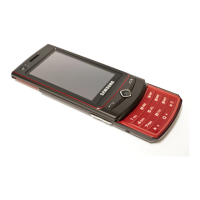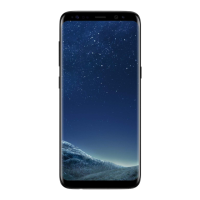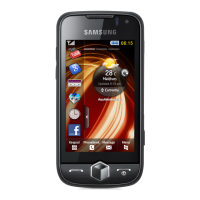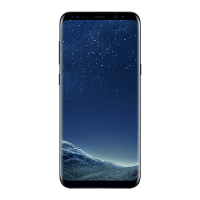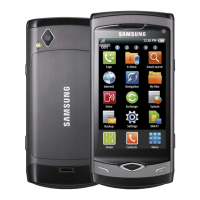Do you have a question about the Samsung S8300 and is the answer not in the manual?
Information on radio frequency (RF) exposure from wireless phones.
Details about Specific Absorption Rate (SAR) compliance for phones.
Explains the FDA's responsibilities regarding the safety of radiation-emitting consumer products.
Outlines the need for studies on RF exposure effects from wireless phones.
Describes FDA's work to understand RF exposure health effects through studies and collaboration.
Covers recommendations from other governments regarding children's use of wireless phones.
Guidelines for safe disposal of used batteries and handling Li-Ion batteries.
Warnings against using the phone with wet hands or in dusty/dirty environments.
Advisories against painting the phone and placing it near heating devices due to overheating risks.
Discusses scientific evidence regarding health risks associated with wireless phone use.
Device compliance statement for FCC Part 15 regulations.
Explains how signal strength affects call quality and how the phone displays it.
| Display type | AMOLED |
|---|---|
| Display diagonal | 2.8 \ |
| Display resolution | 240 x 400 pixels |
| Display number of colors | 16.78 million colors |
| Internal memory | 70 MB |
| Compatible memory cards | microSDHC |
| Rear camera resolution | 3264 x 2448 pixels |
| Rear camera resolution (numeric) | 8 MP |
| Networking type | EDGE / GPRS / UMTS / HSDPA |
| Playback formats | MP3, AAC, AAC+, eAAC+, WMA, RA, AMR |
| Operating frequency | 800, 900, 1800, 1900 MHz |
| USB 2.0 ports quantity | 1 |
| Multimedia Messaging Service (MMS) | Multimedia Messaging Service (MMS) is a standard way to send messages that include multimedia content to and from a mobile phone over a cellular network |
| Maximum frame rate | 30 fps |
| Video compression formats | DivX, H.263, H.264, MPEG4, WMV, XviD |
| Video capture resolution (max) | 640 x 480 pixels |
| Ringer type | Polyphonic |
| Form factor | Slider |
| Phonebook capacity | 2000 entries |
| Text prediction system type | T9 |
| Personal info management (PIM) | Alarm clock, Calculator, Calendar, Notes, Stopwatch, To-do list |
| Talk time (2G) | 4 h |
| Battery capacity | 880 mAh |
| Standby time (2G) | 300 h |
| Bluetooth version | 2.1+EDR |
| Product color | Black |
| Data network | 3G, EDGE, GPRS, HSCSD |
| Mobile network generation | 3G |
| Depth | 12.7 mm |
|---|---|
| Width | 52 mm |
| Height | 110 mm |
| Weight | 119 g |
